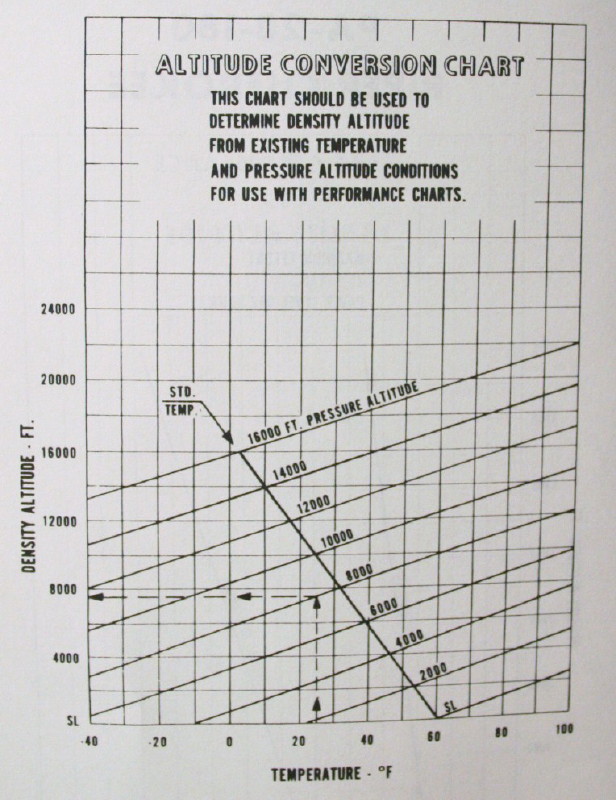Effect of Temperature
The hotter air gets, the less dense it becomes. A light airplane will perform much more poorly on a hot day, climbing out at a slower rate and using a lot more runway. Temperature is a very important factor when determining airplane performance.
Density Altitude
Density altitude is pressure altitude corrected for non-standard temperature. It can be thought of as the altitude the airplane thinks it is at. The airplane's performance will be consistent with the density altitude at which is it flown.
On a cold winter day, the density altitude may be several hundred feet below the airplane's actual altitude, giving the airplane improved performance. On the other hand, a hot summer afternoon may result in a density altitude thousands of feet higher than the airplane's actual altitude. The airplane would perform as if being flown at the density altitude.
Density altitude is calculated from a chart or table supplied by the airplane manufacturer. Below is an example of such a chart. To use this chart, the pilot finds the temperature at the bottom, then follows it up to the pressure altitude. A dashed line and arrows is drawn on the chart as an example. It shows the pilot finding the density altitude with a temperature of 25 degrees and pressure altitude of 8,000 feet. The density altitude is determined to be about 7,500 feet. This density altitude may now be used with other charts or tables to predict airplane performance.
Notice the standard temperature line on the chart, showing 59 degrees at sea level. At standard temperature, pressure and density altitudes remain equal. This makes sense, considering the density altitude is pressure altitude corrected for non-standard temperature. Lower than standard temperatures can be seen to produce decreased density altitudes, while higher than standard temperatures result in increased density altitudes.
Another look at the chart reveals how negatively a hot summer day can effect density altitude. Even at a modest 85 degrees and 1,000 feet pressure altitude, the density altitude is almost 3,000 feet. Under these conditions, this airplane will fly as if it were flown at 3,000 feet. As will be shown by the other performance tables and charts, this higher density altitude often has a dramatic effect of performance, especially takeoff and landing performance.
Effect of Humidity
The standard atmosphere is perfectly dry. However, the air in the atmosphere always carries a certain amount of water vapor, its humidity.
Water vapor is less dense than air. As a result, air that is very humid and carries a lot of water vapor, will be less dense, while dry air is more dense.
Air humidity is not considered as a factor in airplane performance. Humidity does affect air density, just as pressure and temperature do, however, which means humidity also affects airplane performance. Expect the airplane to perform worse with higher humidity. Since the standard atmosphere is perfectly dry, most performance charts also assume the air is perfectly dry. But, the air is never perfectly dry, and humidity does affect performance.
